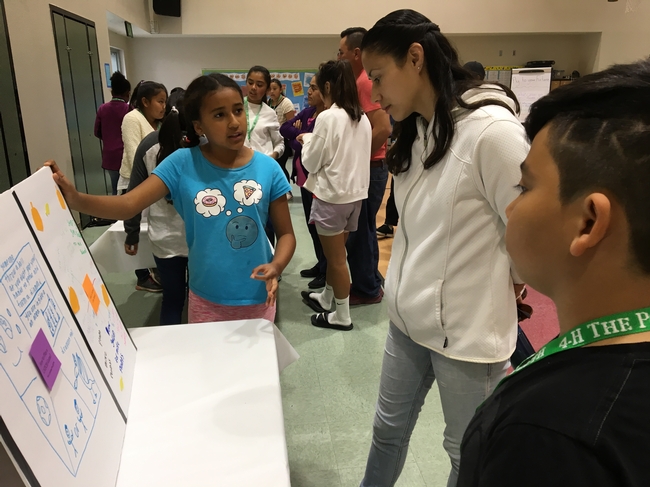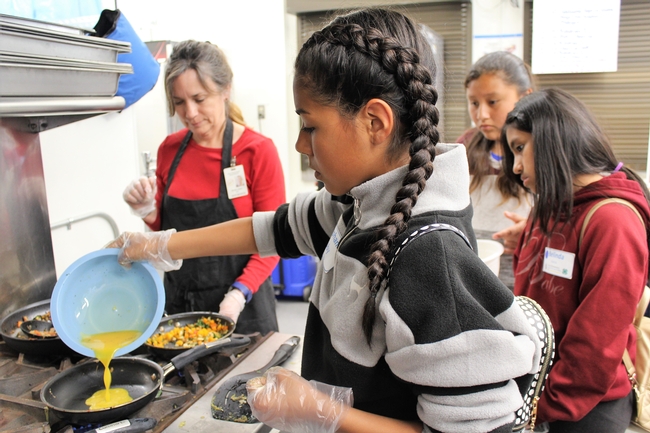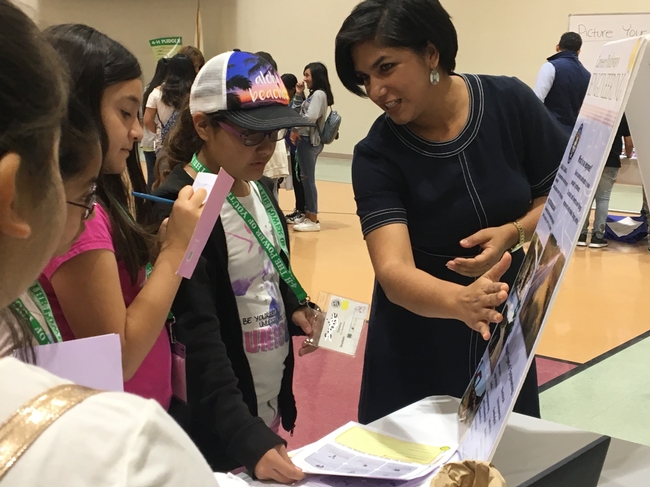After participating in 4-H SNAC programs, 95% of youth participants reported they learned how to be a better leader, supporting increased health outcomes in their communities.
The Issue
Youth in low-income communities of color face health inequities. While 14.6% of all California adolescents ages 12-17 are classified as obese, rates are much higher among Latino adolescents (20.2%) and highest among adolescents in very low-income households (20.4% vs. 12.7% among the highest income households). Further, according to a recent study, youth who feel more connected at school face a 48% - 66% reduction in risk of poor health outcomes in adulthood.
How UC Delivers
Over the course of the 2018/19 academic year UC staff from the CalFresh Healthy Living and 4-H programs in San Luis Obispo and Santa Barbara counties worked with 5th and 6th grade youth in two low-income, Latino communities through weekly after school 4-H Student Nutrition Advisory Councils (SNAC). 4-H SNAC members had the opportunity to learn and practice meeting facilitation skills, in-depth training on nutrition and physical activity education, and become leaders in health and nutrition education on their school campuses. In addition to the after school club meetings, 4-H SNAC members had the opportunity to participate in two 6-hour intensive trainings including the Leadership Academy and the Culinary Academy in partnership with their school district. The Leadership Academy included training in 4-H Officer positions, presentation skills, and included a mini career pathways fair where youth learned about their own interests in relation to different careers. All of the career pathways professionals were from the community and included a dentist, engineers, a health educator, a college professor, and firefighters.
The Impact
“Today I learned how to be a better presenter. I also learned about different jobs, what I want to be when I grow up, and how to be a better leader.” - 4-H SNAC Youth
A total of 32 youth attended at least one of the 6-hour academies. Of the 4-H SNAC members that participated in the Leadership Academy, almost all agreed that due to their participation they learned how to be a better leader (95%) and improved their presentation skills (95%). Qualitative data collected from the Leadership Academy show themes of improved recognition of career pathways, enhanced confidence and presentation skills, and increased confidence in being a leader. Of the 4-H SNAC members that participated in the Culinary Academy, a majority reported that they learned new culinary skills including how to chop vegetables with a knife (97%), how to prepare a healthy snack (97%), how to measure wet and dry ingredients (88%), and how to follow a recipe (91%) because of participating in the culinary academy. In addition, 79% agreed that they could teach others about cooking, and 84% considered themselves a good cook after the academy.
Positive youth development activities are specifically recommended by the Centers for Disease Control and Prevention as a step that schools can take to promote connectedness among youth and thus better health outcomes in adulthood. By creating programming focused on increasing youth confidence to lead, greater awareness of career pathways, and improved ability to teach others about cooking nutritious foods, UCCE is improving individual and community health and wellness, contributing to the public value of promoting healthy people and communities.
Author - Area Director for UCCE in San Luis Obispo, Santa Barbara, and Ventura Counties


